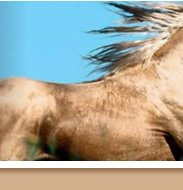![]()
![]()
![]()
![]()
![]()
![]()

![]()
![]()
![]()
![]()
![]()
ArticlesTraining Your Dog using a PetSafe Electric Dog fence WeekIt is important to have as little disruption as possible during your pets' training sessions. During the training process it is VERY IMPORTANT that you do not let your dog run off lead in the yard with or without wearing the dog fence collar. If you do, it will confuse him and you may have to re-start the entire electronic dog fence training process. It would be best to keep him on a leash during the first week. But, never walk your pet over the boundary line on a leash. This may confuse him in the beginning. Eventually, you will be able to take him with you over the boundary on a leash - this is called "Doorway Training" and we will talk about this later. But for now, if he needs to leave the yard, place him in the car, or carry him well over to the other side of the signal field. Don't forget to REMOVE HIS ELECTRIC DOG FENCE COLLAR before taking him from the yard by either of these two options, or he will get corrected as he leaves. To allow your dog to become accustomed to the collar probes on his neck remove the collar after each training session during the first week. After that, remove the dog fence collar each night for the next three weeks. Eventually he will be able to wear the dog fence collar all the time, but it may take some time for him to develop a tolerance to the probes on the receiver. Clean both the probes and the dogs neck every evening for the first 30 days. The training flags are there for two reasons. First, to give your dog a visual boundary and secondly to help you with the training process. The flags should be installed about 12" to your yard side on the dog fence wire in the ground. All of the flags will remain in the yard for about 30 days. Remember the PetSafe electric dog fence training should be fun, and not stressful at all. If other family members are assisting in the training sessions, it is vitally important that everyone follows the exact same technique. Make each session short and upbeat (5 to10 minutes max). Many dogs have extremely short attention spans and training can be very tiring for them, so don't get discouraged if he doesn't "get it" at first - they will eventually learn. Days 1 to 3 Place a leash on your dog using a flat collar or a slip collar, Never place the leash directly on the receiver collar. Prior to placing the dog fence collar on your dog, turn the dog fence collar to the lowest power setting. Your dog needs to first be taught how to respond to the flags. Walk with your dog within the containment area of the yard and praise and play with him. Now, proceed towards the training flags. As your dog head passes the flags, give a quick horizontal or downward "jerk and release" correction on the leash. Bring your dog back about 10 feet into the containment area and praise him. The "jerk and release" is the only negative reinforcement your dog needs. There is no verbal correction needed. The PetSafe dog collar will be giving your dog a warning tone before the very light correction he is getting at the flags. You should tailor the corrections to your pets' personality, temperament, size and breed. Each training session should only last about 5 to 10 minutes. Enter the containment area at various places and focus on areas that the family typically would leave the yard ( ie: driveway, sidewalk or path your dog uses now to leave). Soon you should see your dog turn to avoid the flags. This shows that he is learning. Make sure you play with your dog in the containment area to show him time spent in the yard is a pleasant experience. This will prevent your dog from becoming timid or afraid going into the yard. Remember, keep him on a leash during this first week, even to go outside to the bathroom. Some dogs will "pick up" the training faster than others. Before proceeding to Phase 2, be sure that your dog is happy to run and play in the yard, generally avoiding the flags. If not, spend an extra day or two flag training. Training is simply following the building blocks - you cannot proceed to Phase 2 without first completing the flag training. Content Source: Pet Safe Horses How to Get Free Garbage Bags - The scenario: A newlywed couple moves into their new home. supply SinoNSH GER Gas Engine Oil Regenerationoil purifieroilpurificationoil filtrationoil rec - NSH GER Gas engine oil regeneration(oil purifier,oil purification,oil filtration,oil filter,oil treatment,oil recycling,oil regeneration,oil filtering, oil reclaim plant,oil recovery,waste managment,oil disposal,oil reclamation. Enjoying the Beauty of the Spring Season - The spring of the year is a favorite season for many people, and it is certainly easy to understand why this is so. sell sinonsh insulation oilrecyclingfilterpurifierfiltrationpurificationregenerationtreatme - VFD--Double-Stage High-Efficiency Vacuum Insulation Oil Purifier Application VFD series is mainly used to improve the properties of insulation oil. New York Green Building Initiative - As is occurring in many states, New York is trying to promote Green Building practices. more... |
![]()
![]()
ęCopyright 2025 Alhaja.net All rights reserved.
Unauthorized duplication in part or whole strictly prohibited by international
copyright law.
![]()



